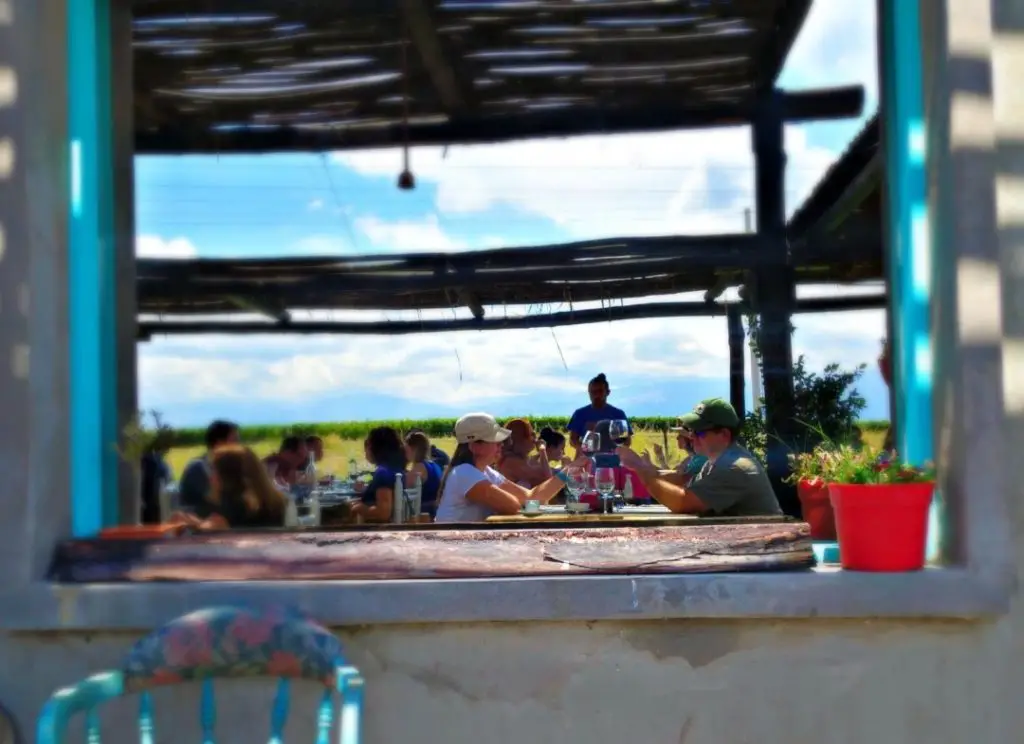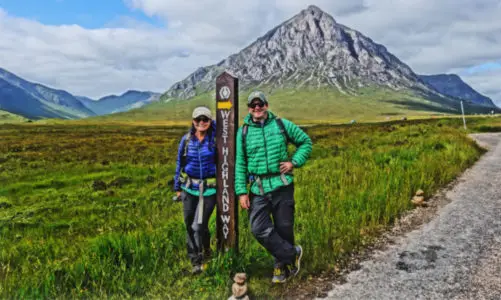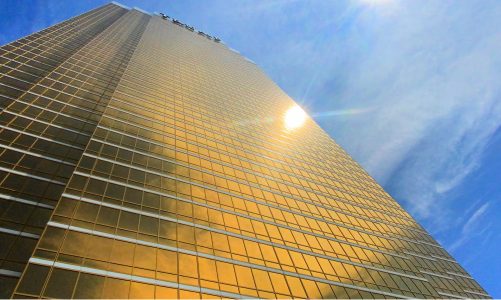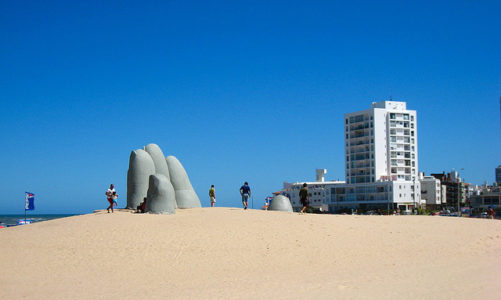Following our exploration of the Patagonia wine region, it was time to embrace the finest Mendoza wine tours. Mendoza stands out as a unique destination on Earth, where one can intimately connect with the terroir, admire the Andes towering over the vineyards, and savor the essence of Malbec. Whether you prefer a self-guided journey or joining a group tour, an extraordinary experience awaits, tantalizing your palate.
To grasp the scale of the region, Mendoza boasts over 1,500 wineries across three distinct wine regions. However, only a handful, perhaps less than 50, offer both tourist accommodations and a truly enriching experience.
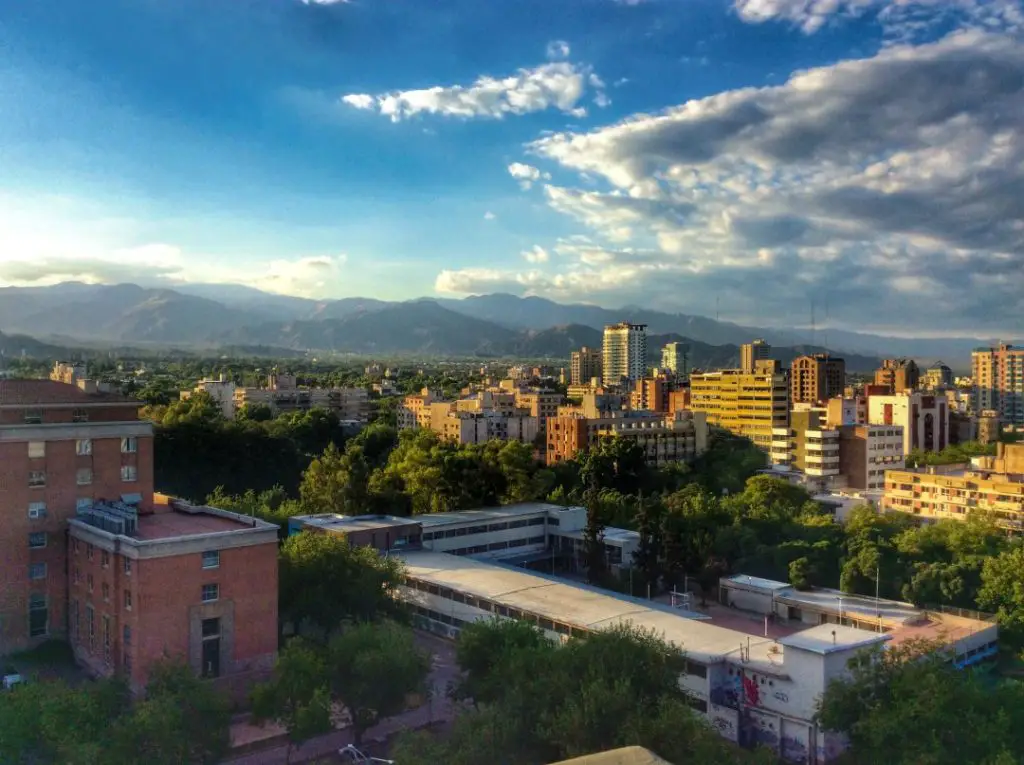
During our two-week stay in the Wine Capital of South America, our objective was to discover top-notch Mendoza wine tours catering to budget-conscious wine enthusiasts. Embarking on a quest prioritizing quality over quantity, we sought out the finest experiences, focusing on the harmonious fusion of food and wine.
Listed below are the wineries we explored, along with tour possibilities.
Best Mendoza Wine Tours – Quick Summary
Mendoza consists of four primary sub-regions. Listed in order of proximity to the city center, they are:
- Maipú
- Luján de Cuyo
- Uco Valley (Valle de Uco)
- San Rafael
Our attention is primarily on the first three regions, as San Rafael is approximately 150 miles away from the city of Mendoza. Regrettably, due to logistical constraints, a detour to San Rafael was not feasible during our journey. Nevertheless, we recognize it as a promising subregion to explore for value.
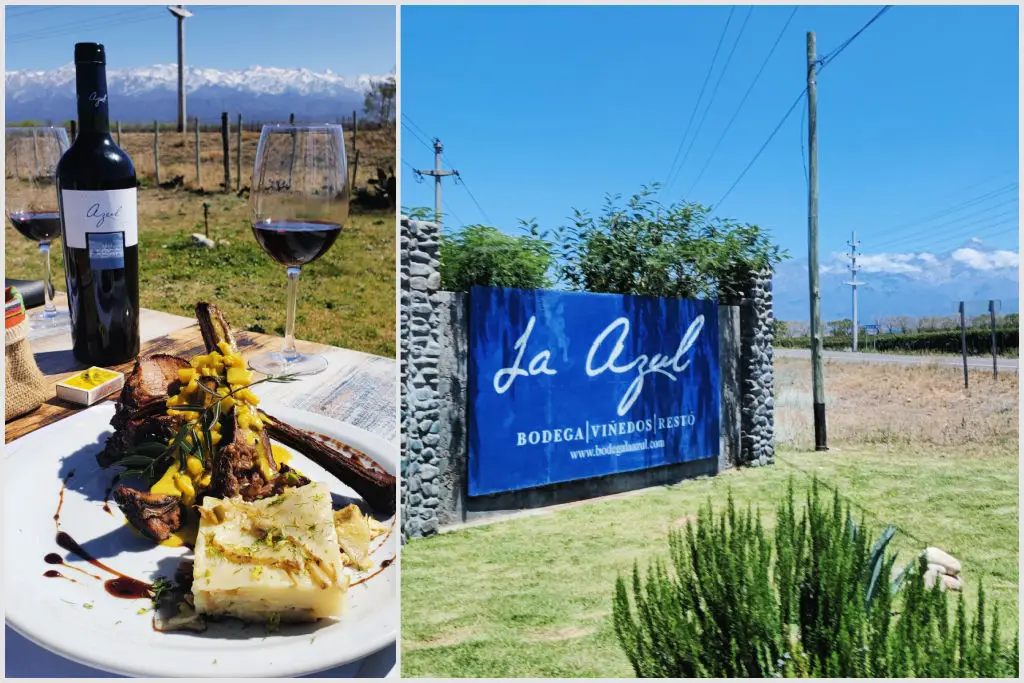
For those short on time, taking a full-day, small-group luxury wine tour with a gourmet lunch to the most prestigious region of the three, and is generally the best option. While an organized tour is a bit more expensive, it is the absolute best value for the money, especially for travelers who are short on time.
🍷 Small-Group Luxury Wine Tour – Check Availability
However, armed with ample time at our disposal, we managed to devise the logistics necessary to reach these distant wineries using either public transportation or taxi/Uber services, as elaborated below.
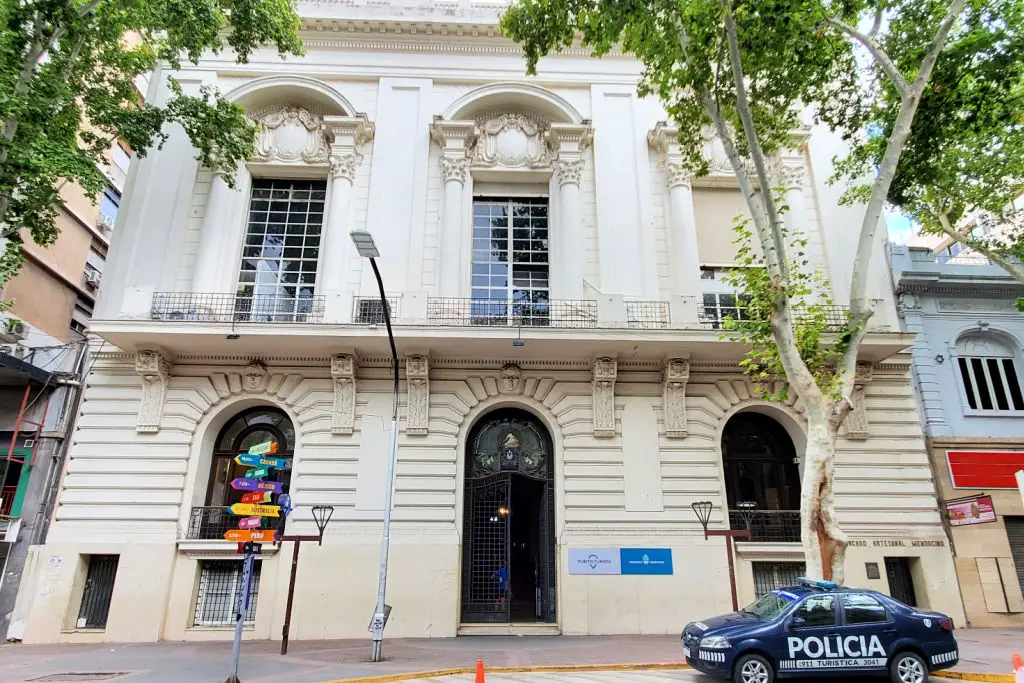
It’s important to note that the Information Center (Centro de Información Turística II) at Av. San Martín 1143 is one of the best places to seek out all up-to-date winery and logistical information. Moreover, the English-speaking agents offered information on where to get buses, the preferred wineries and tasting rooms that were open, and other miscellaneous logistics that helped us plan our time.
To rank our experience at the three sub-regions we’d position them as:
- Uco Valley
- Luján de Cuyo
- Maipú.
We’ll discuss the reason(s) behind the ranking below, starting with Uco Valley.
Uco Valley > Deep Valleys and Steep Mountains
As the top wine-growing area of Mendoza, with the highest altitude producing grapes, Uco Valley gave us the wine experience we were looking for in Argentina. Located between 3,000 to 4,000 feet above sea level with 250+ days of sun, Uco Valley is epic, and for wine lovers a bucket list destination.
About 50% of grapes grown in Mendoza are Malbec, Argentina’s most popular grape. In terms of white wines, Uco Valley produces excellent Torrontés and Chardonnay. In terms of value and quality, these are our go-to wines, even outside of South America. On a side note, pinot noir from Patagonia also provides excellent value.
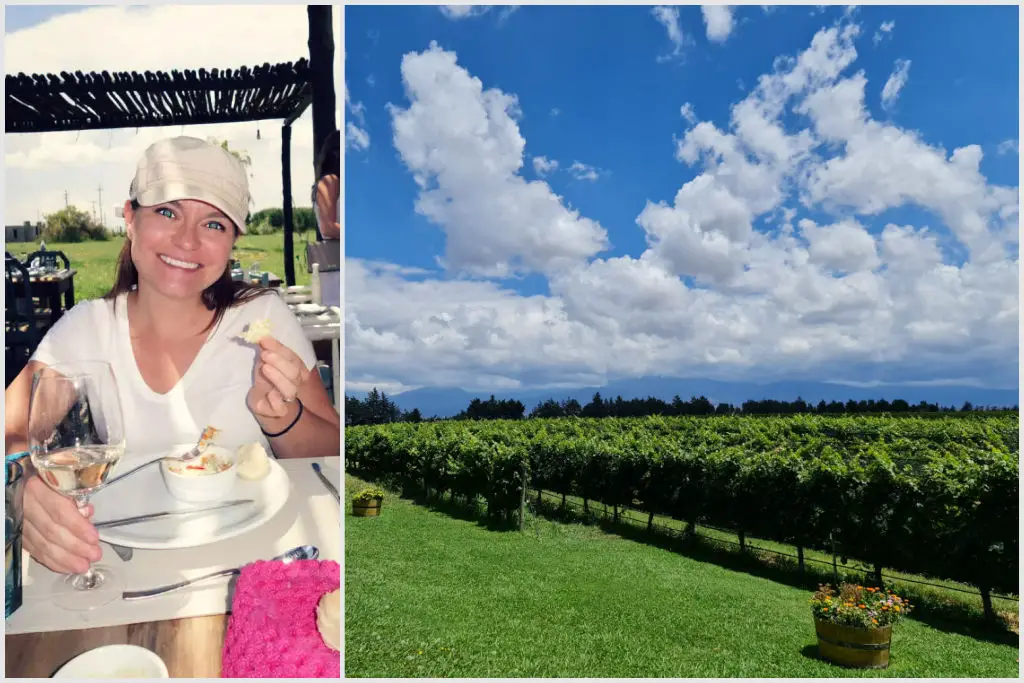
Setting off from our accommodation, we purchased tickets at a small bus agency near our apartment at about USD 10 per person to Tupungato. From Tupungato, we planned on hiring a taxi/uber to take us to three Uco Valley wineries.
Trying to secure a taxi driver in advance from a contact at a winery didn’t help, as we were never able to confirm a pickup. Even so, with fingers crossed, we arrived at the Tupungato bus station, after a little over an hour, and there was one taxi waiting outside.
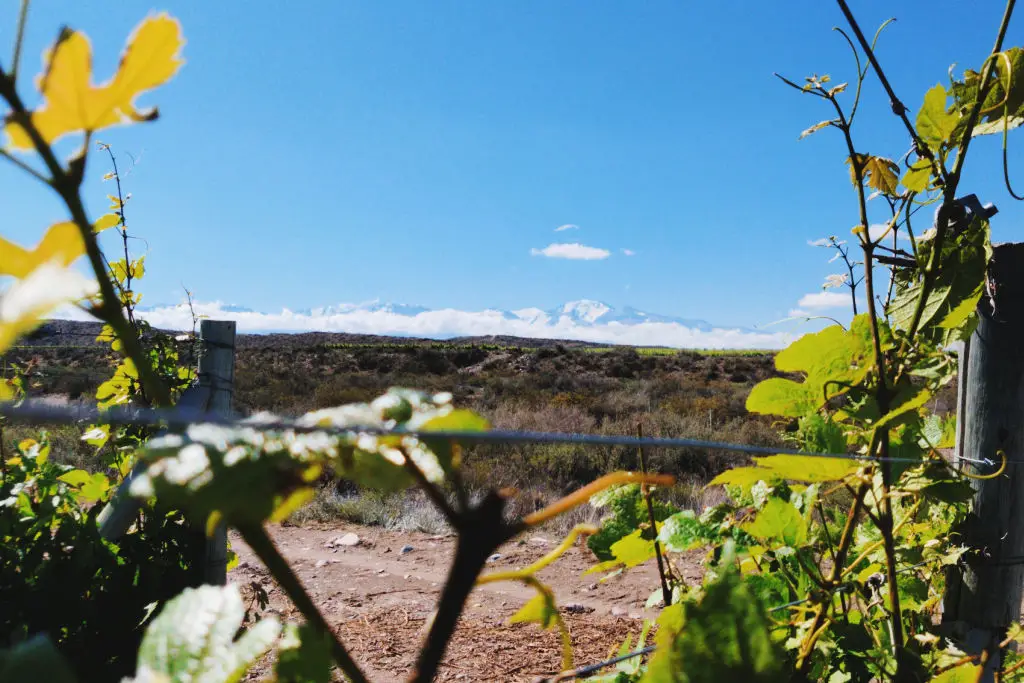
While it wasn’t the taxi we attempted to reserve, we departed the terminal with them anyway. Luckily, this lone taxi was there. Otherwise, we’re not sure what we would have done. Moreover, the taxi driver stayed with us the entire day taking us to the three wineries.
Andeluna
Designed in the spirit of a large French chateau, our first tasting was at Andeluna, and cost about USD 15 per person. Visitors are treated to a lovely tasting room and an outdoor patio that features impressive views of the vineyard and Cordón del Plata, a sub-range of the Andes.
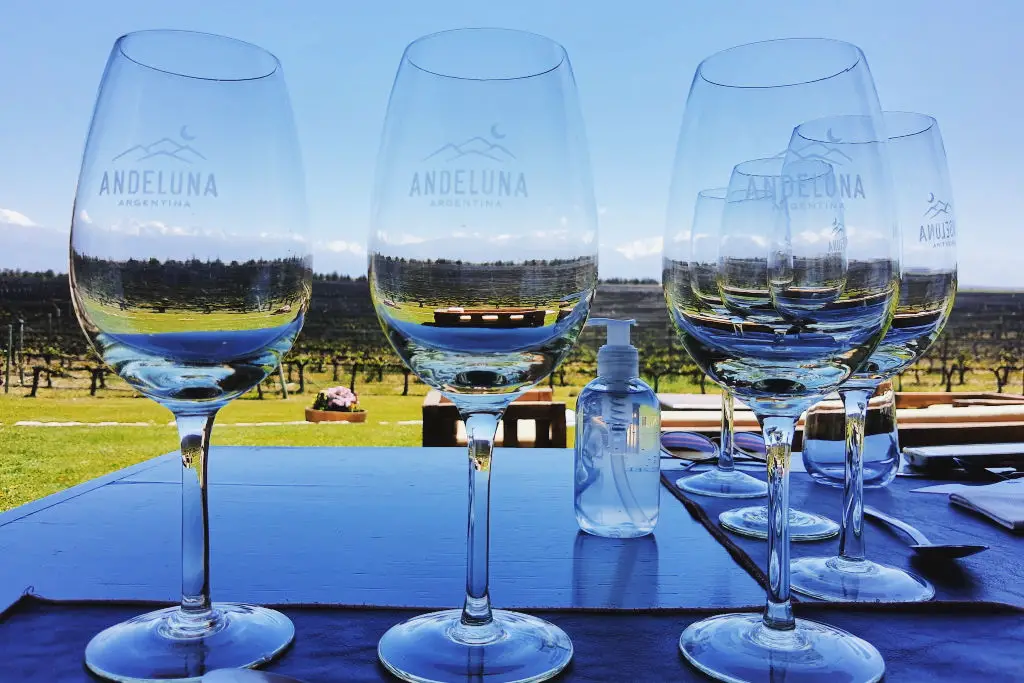
Featuring barn wood ceiling beams, the charming restaurant serves up multi-course menus with wine pairings. Serving mainly regional dishes, Andeluna focuses on cuisine like steak with chimichurri, pastel de papas, filet mignon, and locally grown and produced fruits, vegetables, and cheese that were beautifully presented.
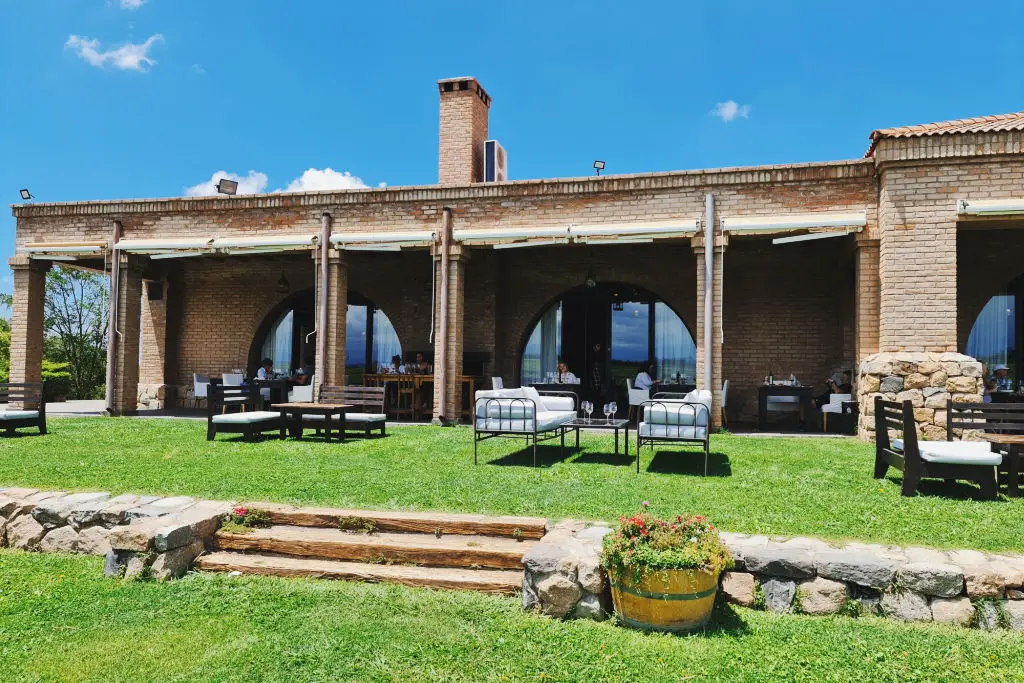
Once again, those travelers short on time, or who prefer private transfers rather than public transportation should take an organized tour. One of the best tours that go to Uco Valley and depart from the city of Mendoza is exploring Uco Valley wineries with a private driver, which is a fantastic deal if your party is between two to four people.
🍷🤑 Uco Valley With Private Driver – Check Availability
Domaine Bousquet
Our next stop of the day was at Domaine Bousquet. Specializing in organic viticulture, Domaine Bousquet focuses on producing high-concentration grapes with robust natural flavors. Moreover, the winery fixates on sustainability by combining traditional winemaking methods with modern ones.
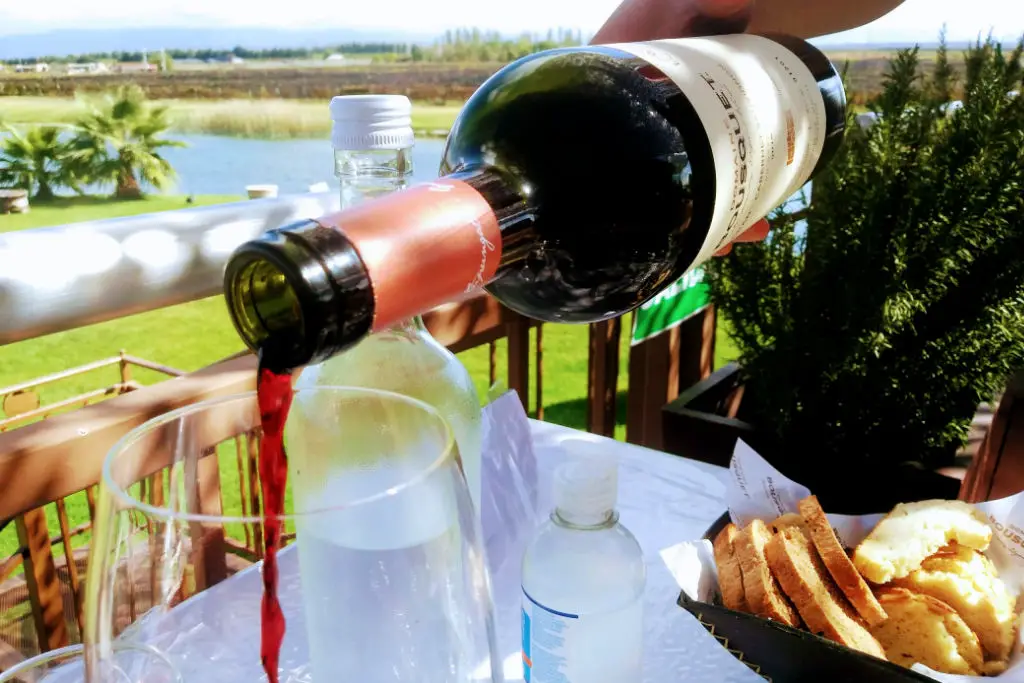
Domaine Bousquet has various pricing based on individual tasting preferences. However, the tasting we did cost about USD 25 per person.
Bodega la Azul
Visiting Bodega la Azul was probably the highlight of our trip to Mendoza. Just, wow! The setting is spectacular.
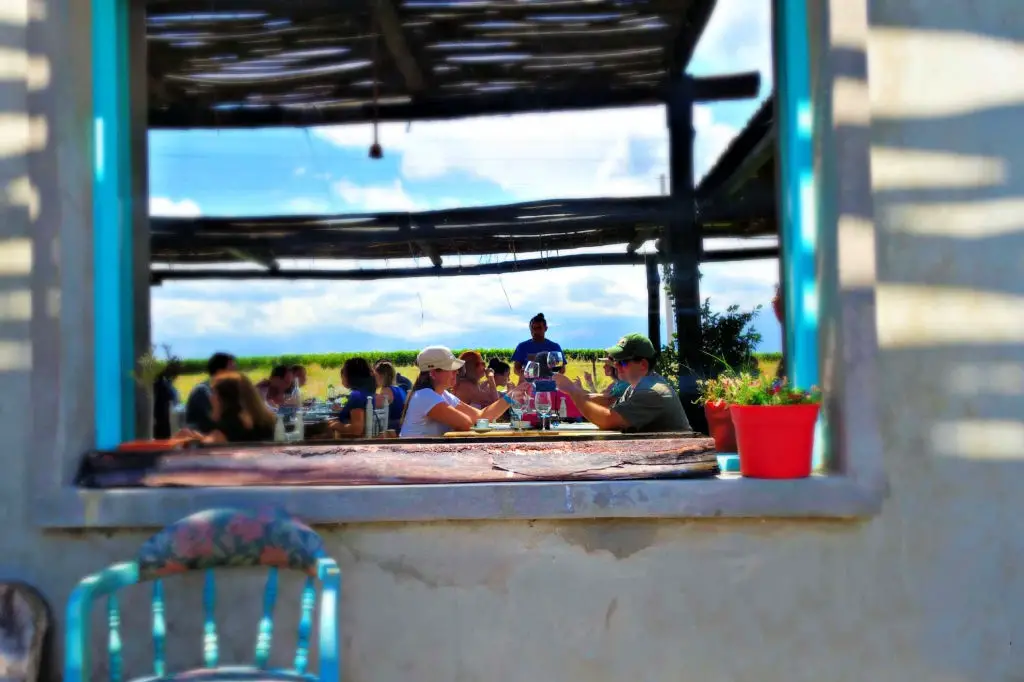
After two winery visits, it was time for lunch—we made reservations at Bodega la Azul, one of the smaller producers in the area. Our dining experience included exceptional views of the vineyards and mountains, and a choice between a three or five-course lunch, with wine pairings.
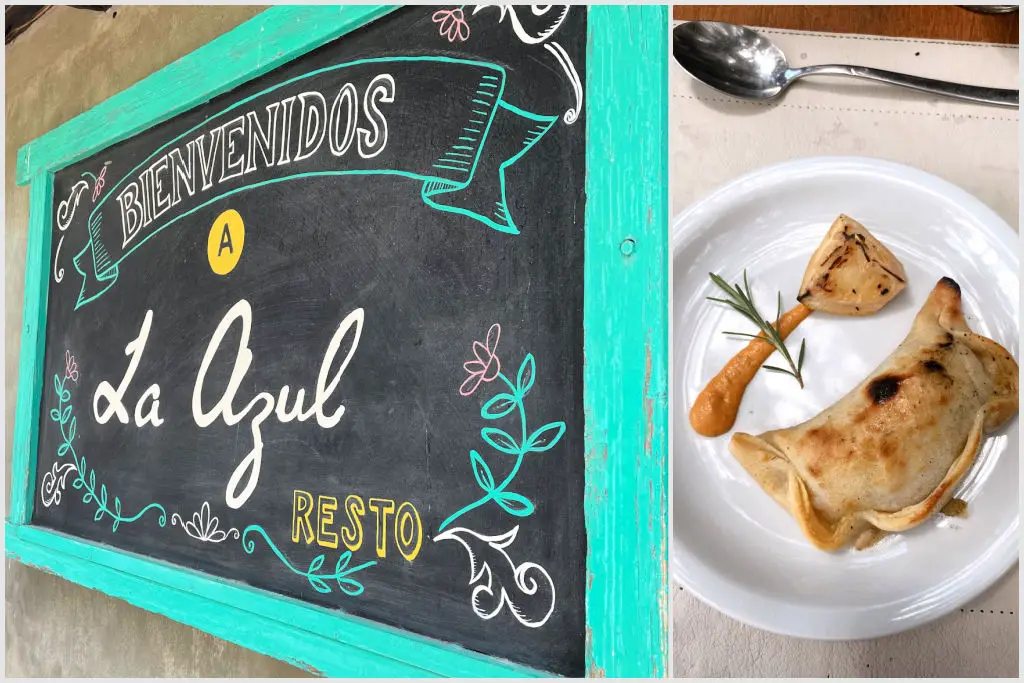
In total, the meal comprised three appetizers, a main course, and a dessert. Additionally, we opted for the five-course meal with wine pairings, totaling around USD 90, with bottomless wine service. Following lunch, we returned to the bus terminal by taxi and safely arrived back in the city of Mendoza.
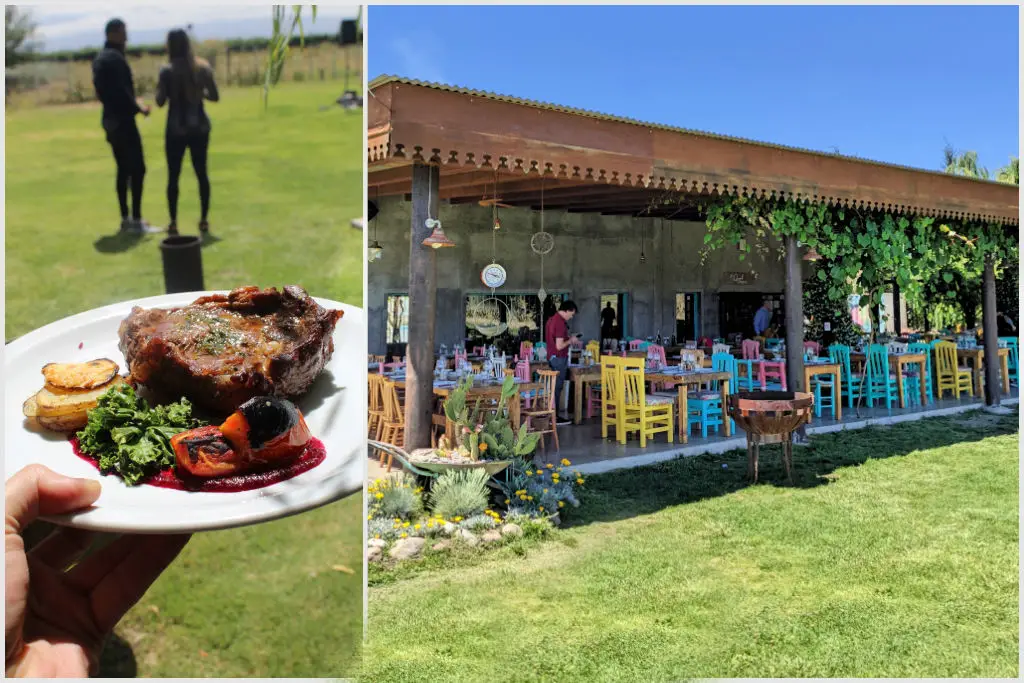
Travelers looking to overnight in the area should consider Casa de Huespedes Finca La Azul, the small boutique-style hotel of the winery. Feeling more like an elegant family guesthouse than a hotel, Finca La Azul is away from the hustle and bustle of the restaurant (Bodega La Azul), in a peaceful and tranquil setting.
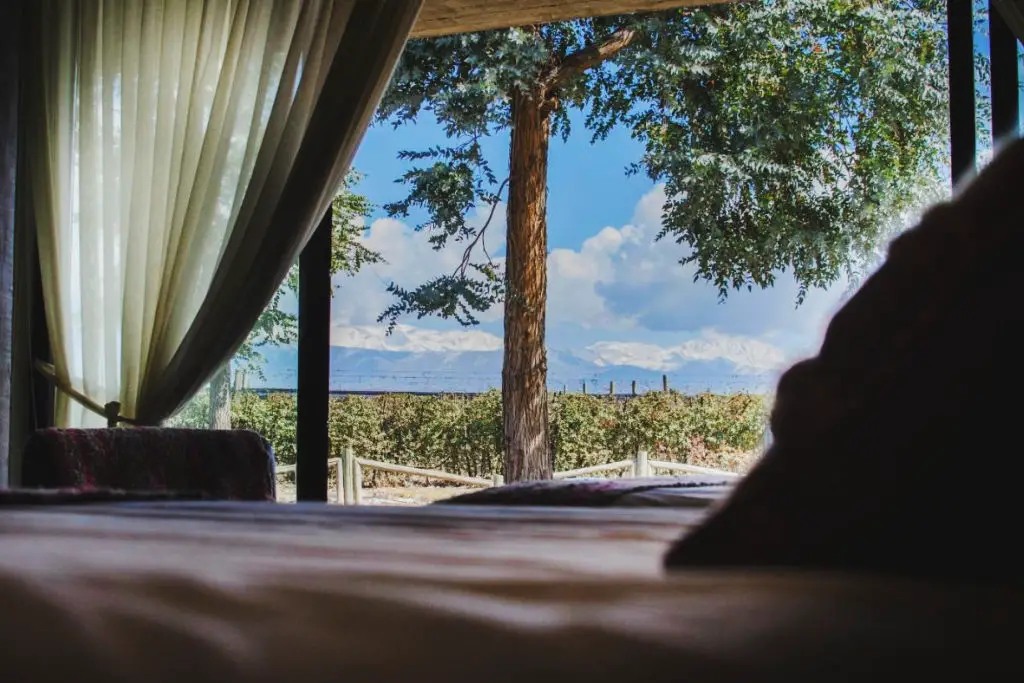
Moreover, all rooms have views of the mountains and vineyards, and the hotel has its own separate restaurant available for dinners, and there’s also a pool onsite.
Luján de Cuyo > Home of Malbec
For our trip to the Luján de Cuyo wine region, we once again took the bus, costing about USD 2 per person. To get the most out of the area, we decided to stay overnight at the Luján de Cuyo B&B. In case you’re wondering, the reviews are true—we had an amazing time.
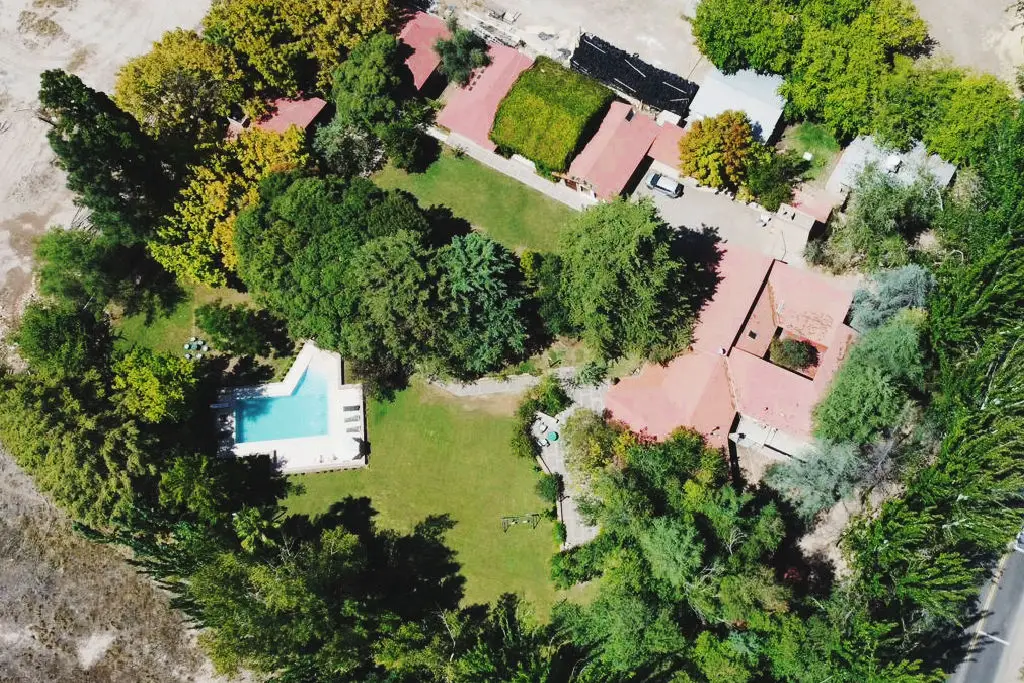
The host, Nacho was wonderful in helping to arrange winery visits over the two days that we stayed with him. Sitting with each guest, Nacho assists in planning their time in the wine region. For this reason, staying at Luján de a Cuyo Bed and Breakfast is a no-brainer and something we highly recommend.
Primula Catina > Dante Robino > Roberto Bonfanti
On our first day, Nacho helped organize a vineyard lunch at Primula Catina Ferraviarua and a tasting at Dante Robino. Chivalricly, he drove us to the winery free of charge.
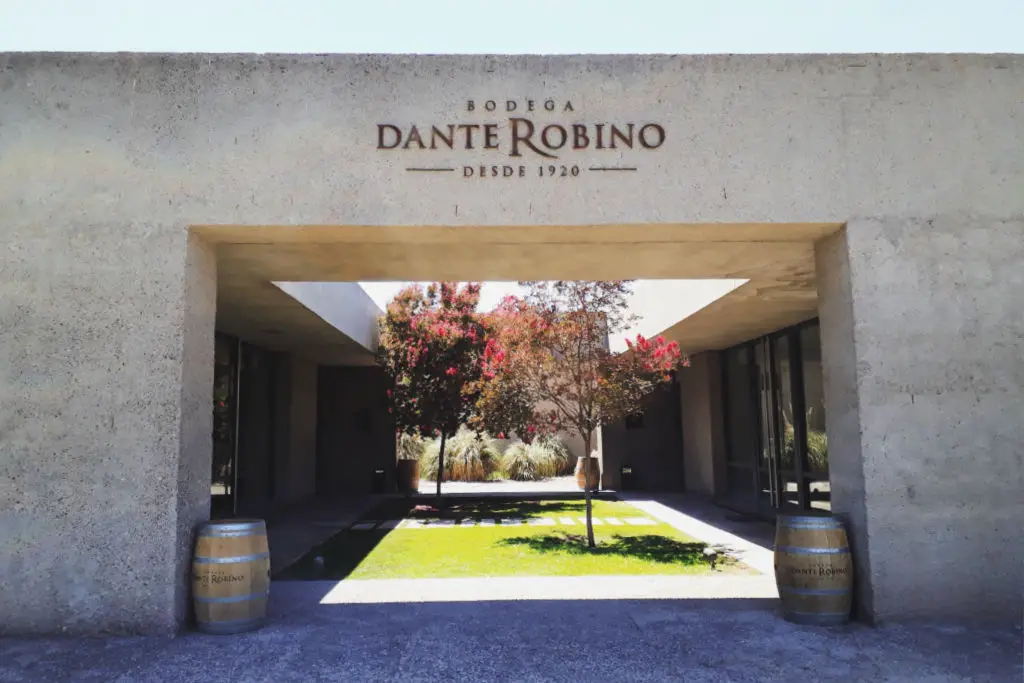
On the second day, Nacho recommended a tasting and tour at Roberto Bonfanti. Unbeknownst to us, the tour was free and one of the best tours we had in Argentina—it was a personalized tour by the founder’s grandson!
Another perk is that Luján de Cuyo B&B offers an outside reasonably priced home-cooked communal dinner to share with other guests. During our stay, Nacho’s mother cooked up a tasty home-cooked meal—accompanied by endless wine.
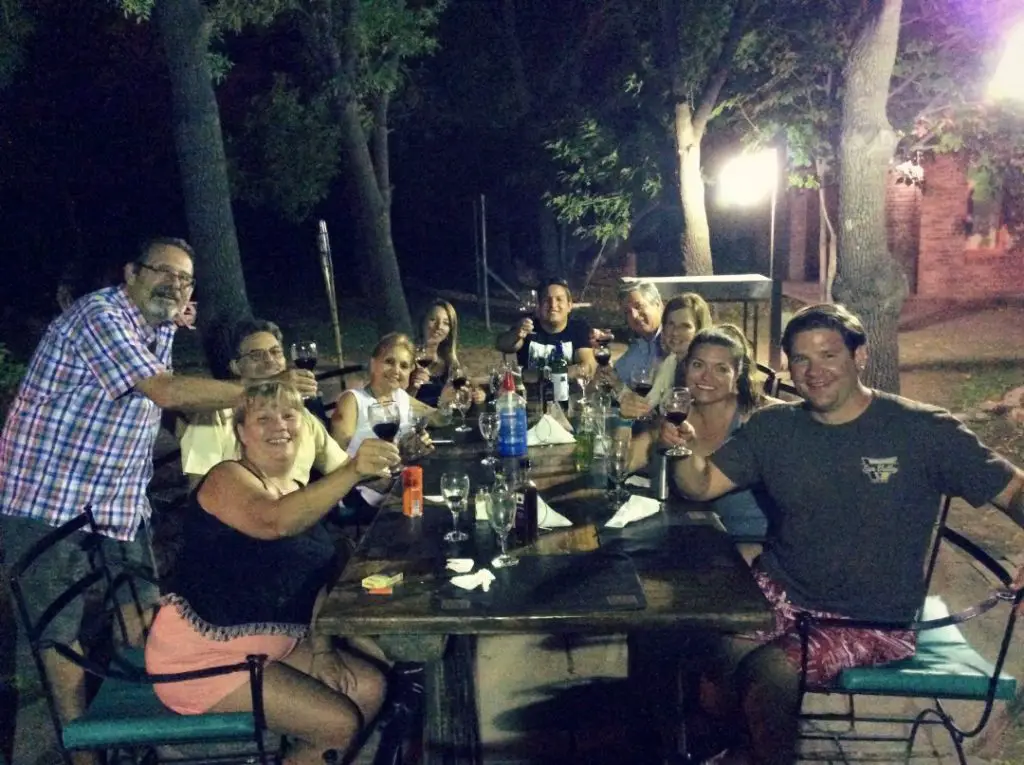
It was such a fantastic experience and one of the main reasons why the B&B is so highly ranked. However, for one of the finest and most budget-friendly wine excursions departing from Mendoza, delve into the heart of Malbec at Tierras Altas.
Discover Malbec’s essence at Tierras Altas, a premier winery in Luján de Cuyo. Take a guided tour of the vineyards, cellar, and production areas. Taste wines straight from tanks and barrels, and see the winemaking process up close. Just a short drive from Mendoza City.
🍷 Bodega Tierras Altas Experience – Check Availability
Maipú
Many on the backpacking circuit come to Maipú to rent bikes and hit up as many bodegas as possible. Mr. Hugo Bike Rental is across the street from the bus stop.
When compared to the Uco Valley, Maipú is not considered as being in as prestigious of a region. For this reason, some bodegas offer free tastings, and while reservations are preferred, they are not typically necessary.
Once again, we took a local bus with the plan to enjoy lunch at Pie de Cuba and tour a few wineries. Also, we chose to walk and not rent a bicycle, as most people do because 1.) we were looking for a quality lunch experience and 2.) it was so hot that it just didn’t seem ideal at the time.
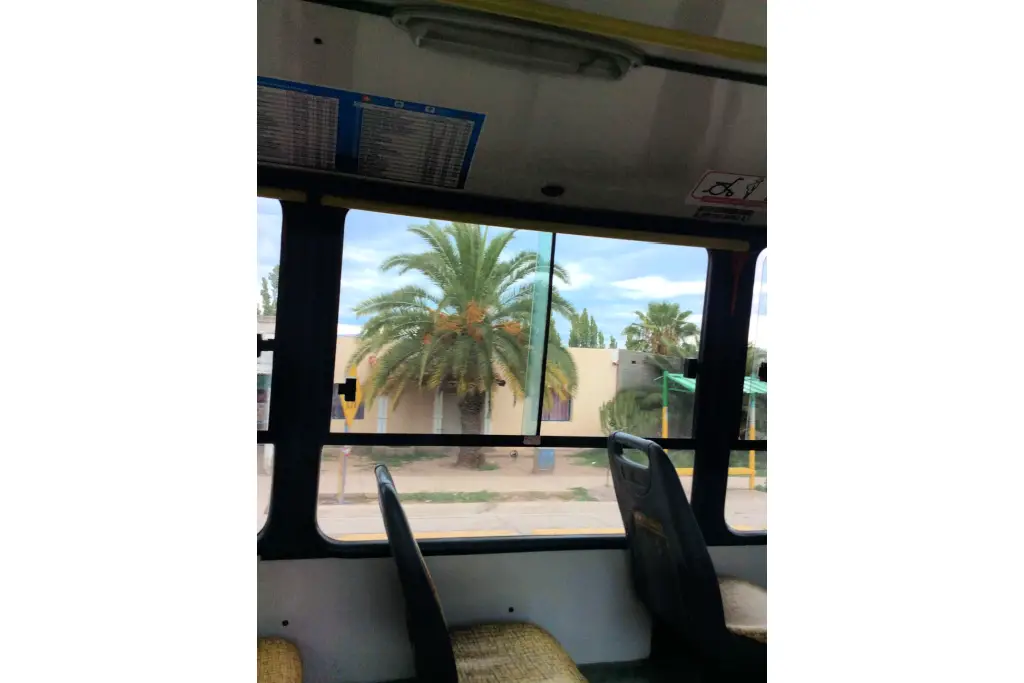
Once we arrived, we quickly realized that Maipú is in a bit of a residential/commercial area, it was not pleasing to the eye. Plan on cycling on busy roads with lots of traffic and limited scenery. To sum up our experience, we walked around a bit and headed back to the Mendoza city center.
Summing Up Maipú
In short, we had a difficult time in Maipú. We came in the early afternoon and discovered the gate to Pie de Cuba restaurant was shut, and it wasn’t opening for another month. To make matters worse, all of the bodegas within walking distance were closed for siesta.
Finally, much of the scenery where we walked was uninspiring, to say the least. Also, there was not a taxi in sight to take us to the other/southern side of Maipú.
Be prepared to be flexible, as unpredictability is part of the experience in South American wine country. If something doesn’t feel good or right, typically, the best thing to do is to simply move on.
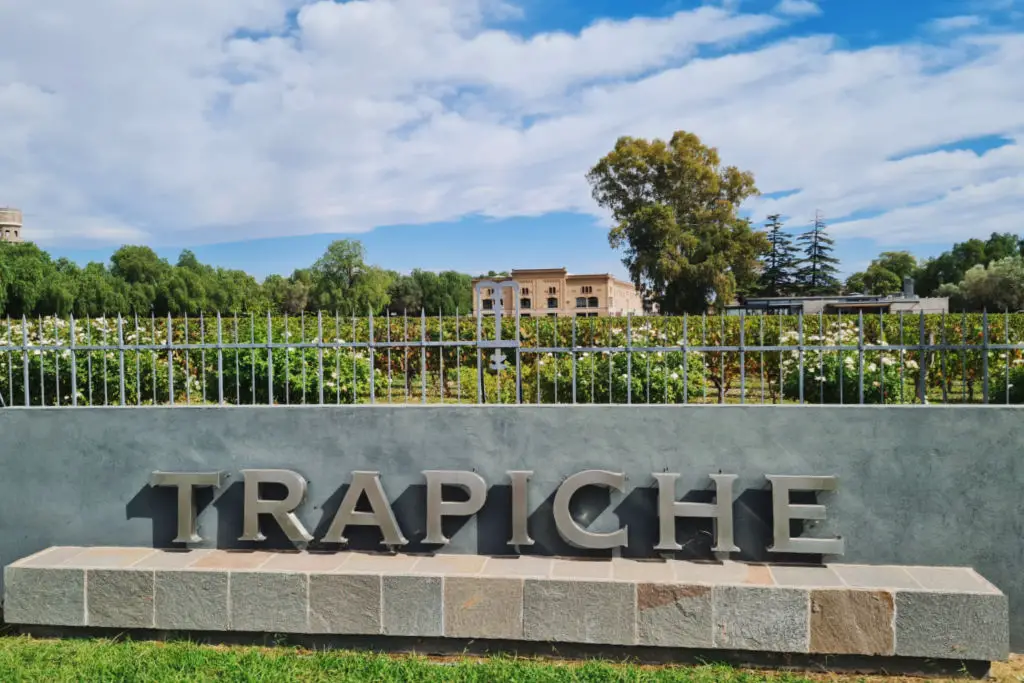
To make logistics much easier, another option is to book a Maipú Wine-Tasting Tour from Mendoza Including Trapiche Winery. Overall, unless you are looking for that bike riding experience and you are on a quest to visit as many bodegas as possible, we would recommend avoiding Maipú.
Spend your time, and money, in the other two wine regions. Typically, these will come with more individualized experiences, better views, and high-quality wines.
Option of Taking Guided Mendoza Wine Tours
Taking public transportation and managing the logistics ourselves saved us about half the cost of going on a tour. However, it also took a lot more time to visit the regions, and a considerable amount of time to complete the research.
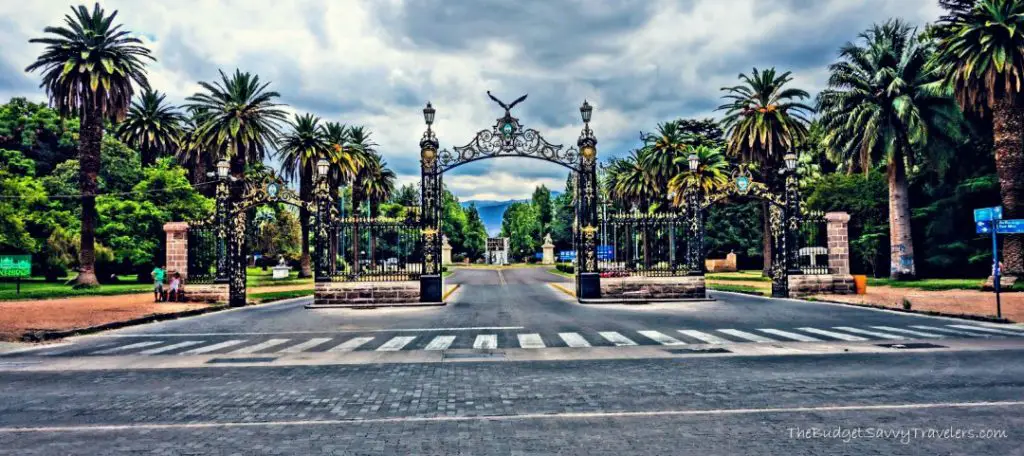
While being a bit pricey, there is a huge advantage to taking an organized tour—especially, for travelers short on time.
Anyone looking to take one amazing tour from Mendoza should consider the full-day, small-group luxury wine tour with a gourmet lunch. Moreover, this tour is similar to the one we took but avoids the crowds, public transportation, and logistical hassle. Also, it visits the best and most beautiful wine region in Argentina, the Uco Valley.
Enjoying Wine in Mendoza City
To get a nice wine-tasting experience in the city center, head to Chinitas Wine Club or La Sala de Maridajes. Both places have knowledgeable-friendly staff and a great selection of small-production wines.
Budget Tip: While in Mendoza, head to the town hall which offers a 360 terrace view of the city. It’s a beautiful and hidden secret. Hours are from 10-1 pm and 6-8 pm and the cost is free!
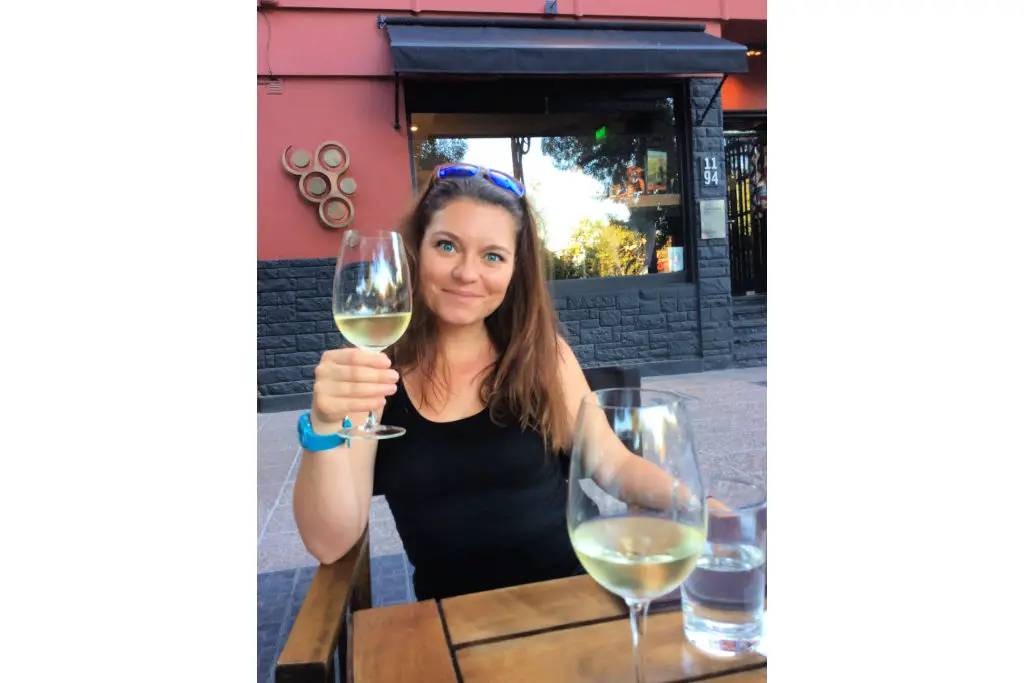
Below are some of the most frequently asked questions about Mendoza wine tours.
Where to Stay in Mendoza City?
The best area of the city to stay is between Independence Plaza and General San Martín Park. This location allows tourists to easily walk to the main attractions and restaurant row, on Av. Arístides Villanueva. Two comfortable B&Bs positioned within this space include 1.) Bed And Breakfast Plaza Italia and 2.) Huli B&B.
How much do Mendoza wine tours cost?
Mendoza wine tours typically include visiting one of the three main wine regions in the area, including Maipú, Luján de Cuyo, and the Uco Valley. The cost of the tour will depend on the region visited. Generally, however, wine tours to Uco Vally are the most expensive, costing about USD 200 per person, while wine tours to Maipú are the least expensive, costing about USD 100 per person.
How many days do you need in Mendoza?
Visitors of Mendoza should allocate at least two full days to tour the city and a wine region. One day should be used to explore the city and another day should be used to take a tour of the Uco Valley.
Tourists with more time should plan on spending one or two nights in Luján de Cuyo. Finally, additional time can be used to slow travel or add an adventurous tour to the Andes or go horseback riding with gauchos.
What is the most famous winery in Mendoza?
With a bodega located in Maipú, Trapiche exports the most wine from Argentina and is the most famous winery in Mendoza. Founded in 1883, Trapiche exports to more than 80 countries and produces nearly 4 million cases of wine per year.
When should I go to Argentina wine country?
The best time of the year to visit Mendoza is between October and November, and between February and April, when the weather is generally warm but not hot. December and January are also nice months, however, the height of the summer can get extremely high in temperature.
More specifically, the planting and harvesting months are especially exciting times to tour wineries. The planting months typically take place in October, while the harvesting months generally occur from February to April. Finally, a huge festival (La Fiesta Nacional de la Vendimia) is thrown in early March to celebrate the wine and the harvest season.
We Need Your Help
Did you find this article helpful? If so, bookmark it and when you’re planning your next vacation click on any of the links below before finalizing reservations. You’ll get the best price, we’ll earn a small commission, and you’ll help support future articles.
Thank you!
BEST TRAVEL SEARCH ENGINES
🏘️ Book Your Accommodation
We use Tripadvisor and Priceline’s Express Deals to compare prices and reviews in advance and check availability
✈️ Book Your Flight in Advance
To find the cheapest flight options, you can use WayAway and Skyscanner to find the most suitable choice for you
🚗 Reserve Your Rental Car
Use DiscoverCars and Skyscanner to compare prices and view the largest selection of vehicles

